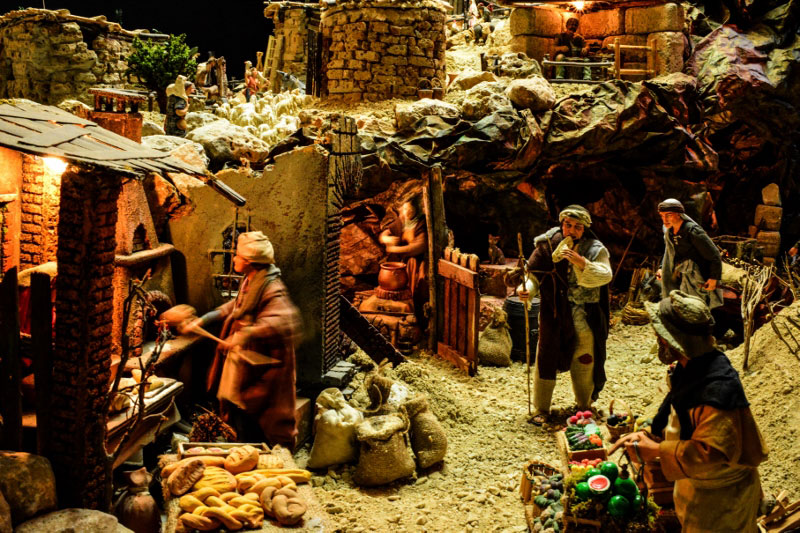|
The presepio, derived from the Latin word presepium, meaning manger, has been the defacto symbol of Christmas for Italian families for dozens of generations, and in the South, perhaps as long as a thousand years. Of course, most Italians also have a modern Christmas tree, but the presepio in its simplest form is a tradition of devotion representing the birth of the baby Jesus. These nativity scenes typically consist of a structure to represent the simple barn where Joseph and Mary were forced to give birth to the Son of God. An ox, donkey, angels and perhaps the three Wise Men are typically represented. But the presepio is often much, much more, showing village scenes from every day life. Its components are mostly handmade from a variety of materials: wood, ceramic, cartapesta (Papier-mâché), terracotta and fabrics. Some scenes include small waterfalls or fountains, houses, buildings, mountains, trees, grottoes, livestock and vendors of all sorts. The details can be absolutely astounding.  There are some characters and elements that many deem essential to the tradition:
|
Categories
All
Archives
January 2024
|























 RSS Feed
RSS Feed
